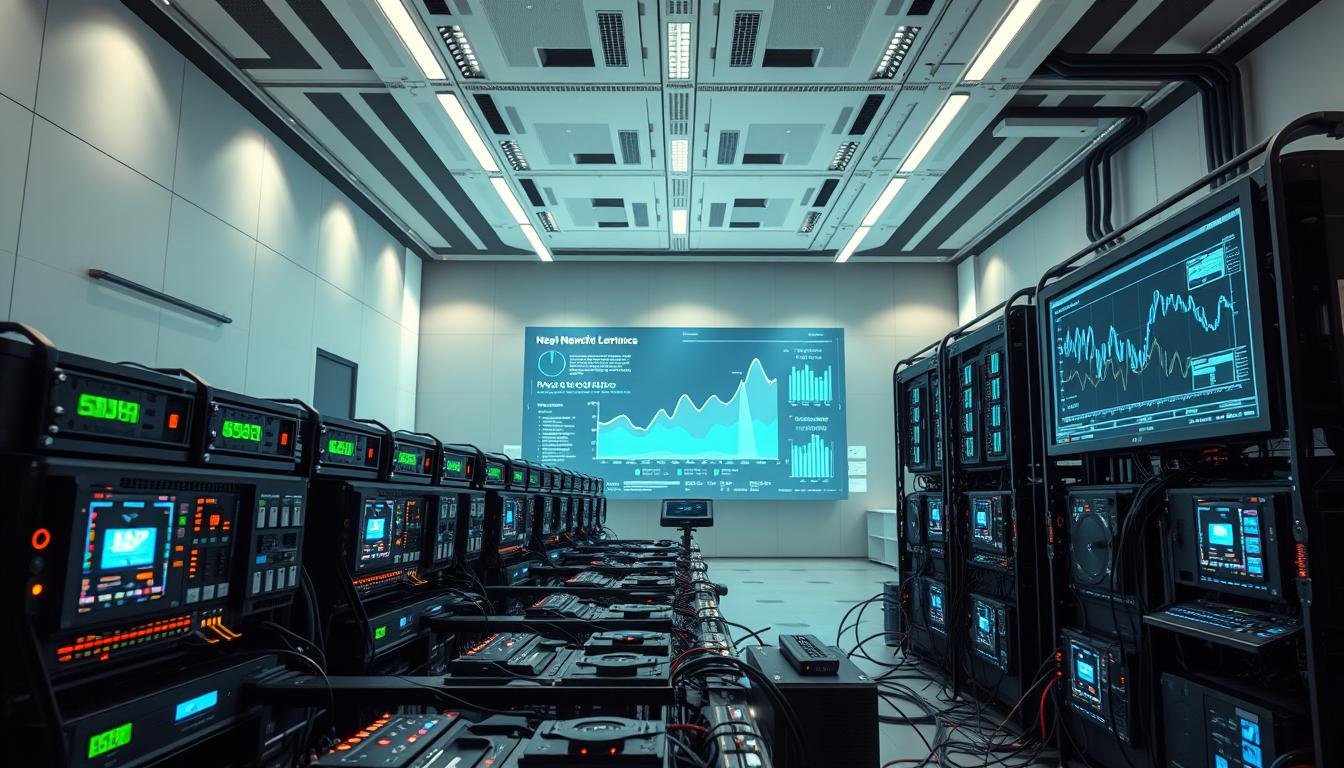What if the key to unlocking the full potential of large language models lies in choosing the right approach? The debate between two powerful methods—RAG and fine-tuning—has become a cornerstone in AI development. Both aim to enhance model performance, but they do so in fundamentally different ways.
Meta AI introduced RAG in 2020 to address limitations like hallucinations in AI responses. On the other hand, fine-tuning focuses on adapting pre-trained models to specific tasks. Enterprises across industries, from finance to healthcare, are leveraging these methods to solve complex problems.
This article dives into the technical differences, use cases, and implementation considerations for both approaches. Whether you’re exploring IBM’s watsonx.ai or ensuring GDPR compliance, understanding these methods is crucial for strategic AI adoption.
Key Takeaways
- RAG and fine-tuning are two distinct approaches to enhancing AI model performance.
- Meta AI introduced RAG to address issues like hallucinations in large language models.
- Fine-tuning reduces model size significantly, improving efficiency.
- Both methods have applications in industries like finance and healthcare.
- Strategic selection depends on data dynamics and resource availability.
Introduction to RAG and Fine-Tuning in AI
In the world of AI, two powerful methods are shaping how we enhance language models. Retrieval-Augmented Generation (RAG) and fine-tuning each offer unique ways to optimize performance. RAG acts as a dynamic data retrieval system, pulling external sources to improve outputs. Fine-tuning, on the other hand, specializes models by retraining them on specific domain datasets.
One key difference lies in how they handle data. RAG provides real-time access to information, making it ideal for up-to-date responses. Fine-tuning embeds static knowledge into the model, perfect for specialized tasks. For example, RAG uses semantic search capabilities, often powered by vector databases like Pinecone, to retrieve relevant data.
Parameter-efficient fine-tuning (PEFT) methods, such as LoRA and QLoRA, have also gained traction. These techniques reduce resource demands while maintaining accuracy. Enterprises are increasingly adopting hybrid approaches, with 67% of Fortune 500 companies leveraging both methods for optimal results.
Costs vary significantly between the two. RAG implementations typically range from $5,000 to $50,000, while fine-tuning can cost between $50,000 and $500,000. Regulatory considerations, such as HIPAA in healthcare and SEC compliance in finance, also play a crucial role in choosing the right approach.
What is Retrieval-Augmented Generation (RAG)?
Retrieval-Augmented Generation (RAG) is revolutionizing how AI models interact with data. This approach combines the power of large language models (LLMs) with real-time information retrieval, creating more accurate and context-aware responses. Unlike traditional methods, RAG pulls relevant documents from external sources to enhance its outputs.
How RAG Works: The Four-Stage Process
The RAG pipeline operates in four stages: Query, Retrieval, Integration, and Response. First, the system processes a user query. Next, it retrieves relevant data using semantic search mechanics, powered by vector embeddings and cosine similarity. This ensures the most accurate matches are found.
During integration, the retrieved information is combined with the LLM’s knowledge base. Finally, the model generates a response that reflects both its training and the newly retrieved context. This process reduces hallucinations by 40-60%, making it a reliable choice for enterprise applications.
Benefits of Using RAG in AI Applications
One of the key advantages of RAG is its ability to update information in real-time. Unlike static models, RAG ensures responses are always based on the latest data. This is particularly useful in industries like finance, where JPMorgan uses RAG for earnings analysis.
RAG also optimizes unstructured documents through chunking strategies, typically using 512-token segments. Hybrid cloud implementations, such as those with Databricks and Snowflake, further enhance its scalability. However, maintaining these pipelines requires 20-30% of engineering time for optimization.
Security is another strong point. Role-based access controls ensure data pipelines remain secure. With Meta AI’s original implementation achieving 15% accuracy improvements, RAG continues to set new standards in AI development.
What is Fine-Tuning in AI?
Fine-tuning in AI is a game-changer for creating specialized models. It adapts pre-trained models to perform specific tasks with higher accuracy. This process involves retraining a base model on a smaller, task-specific dataset, making it ideal for niche applications.
The Fine-Tuning Process: From Pre-Training to Specialization
The fine-tuning workflow begins with a base model, such as GPT or BERT. Next, training data is prepared, requiring at least 10,000 high-quality labeled examples. Supervised training follows, where the model learns from this dataset.
Evaluation ensures the fine-tuned model meets performance standards. Full fine-tuning updates all parameters, while Parameter-Efficient Fine-Tuning (PEFT) methods like LoRA and QLoRA reduce resource demands. For example, Johns Hopkins achieved 98% diagnostic accuracy in medical AI using fine-tuning.
Advantages of Fine-Tuning for Specific Tasks
Fine-tuning excels in domain-specific tasks, improving accuracy by 35-50%. It also allows for tone and style customization, as seen in Goldman Sachs’ earnings reports. Cost-effective implementations are possible with tools like AWS SageMaker and Azure ML.
However, fine-tuning requires significant computational resources, often leveraging NVIDIA A100 GPU clusters. Risks like catastrophic forgetting are mitigated through techniques like elastic weight consolidation. ROI metrics show up to 300% returns in applications like manufacturing defect detection.
RAG vs Fine-Tuning: Key Differences
When it comes to enhancing AI models, the choice between methods can shape outcomes significantly. Understanding the distinctions in data access, resource demands, and implementation timelines is crucial for making informed decisions.
Data Access and Integration
One of the most significant differences lies in how each method handles data. Retrieval-Augmented Generation excels in real-time data access, pulling updated information from external sources. This makes it ideal for industries like healthcare, where timely answers are critical.
Fine-tuning, on the other hand, relies on static datasets embedded into the model. While this approach ensures consistency, it lacks the flexibility to adapt to new information. For example, Tesla uses a hybrid approach for service manuals, combining both methods for optimal results.
Computational Resources and Costs
Infrastructure needs vary widely between the two approaches. Retrieval-Augmented Generation requires vector databases for efficient data retrieval, while fine-tuning demands powerful GPU clusters for retraining. These differences impact both resources and costs.
Cost comparisons reveal that Retrieval-Augmented Generation averages $0.50 per query, whereas fine-tuned models cost just $0.02. However, implementation timelines differ significantly—2-4 weeks for Retrieval-Augmented Generation versus 8-12 weeks for fine-tuning.
Maintenance overheads also play a role. Retrieval-Augmented Generation incurs 15% monthly costs for data updates, while fine-tuning requires ongoing organization of specialized datasets. These factors influence scalability, with linear cost curves for Retrieval-Augmented Generation and exponential ones for fine-tuning.
Accuracy tradeoffs are another consideration. Retrieval-Augmented Generation achieves 92% accuracy in legal document review, while fine-tuning reaches 96%. Failure rates in production environments are 12% for Retrieval-Augmented Generation and 8% for fine-tuning, highlighting the importance of team skills—data engineers for Retrieval-Augmented Generation and ML specialists for fine-tuning.
When to Use RAG in AI Development
AI development is evolving rapidly, and choosing the right method can make all the difference. Retrieval-Augmented Generation (RAG) stands out as a powerful approach for enhancing AI systems. It’s particularly effective in scenarios requiring real-time information retrieval and dynamic knowledge integration.
RAG in Enterprise Applications
Enterprises across industries are leveraging RAG to streamline operations and improve decision-making. Walmart, for instance, uses RAG to handle over 500,000 product database queries daily. This ensures accurate and timely responses for customers.
Bloomberg’s real-time financial data analysis system is another prime example. By integrating RAG, they achieve faster and more reliable insights for traders and analysts. This approach is also transforming customer service, with Salesforce’s Einstein GPT reducing escalations by 70%.
RAG for Up-to-Date Information Retrieval
One of RAG’s standout features is its ability to access the latest information. This makes it ideal for applications like news aggregation and stock trading algorithms. In healthcare, Mayo Clinic uses RAG to retrieve patient records efficiently, ensuring doctors have the most current data.
Manufacturing companies like Siemens also benefit from RAG. Their equipment manual access system provides technicians with instant, accurate guidance. Similarly, Home Depot’s inventory management chatbot uses RAG to optimize stock levels and improve customer satisfaction.
Compliance is another area where RAG shines. GDPR-compliant customer data handling ensures businesses meet regulatory requirements while maintaining efficiency. With response times as low as 200ms, RAG is setting new benchmarks in AI development.
When to Use Fine-Tuning in AI Development
In the realm of AI development, fine-tuning has emerged as a critical tool for achieving precision and efficiency. This method is particularly effective when working with specialized domains or unique use cases. By adapting pre-trained models to specific tasks, fine-tuning ensures higher accuracy and better performance.
Fine-Tuning for Industry-Specific Applications
Fine-tuning excels in industries where tailored solutions are essential. For example, Lockheed Martin uses fine-tuned models to manage aerospace engineering documentation. This ensures that complex technical data is accurately processed and easily accessible.
In the legal sector, Clifford Chance leverages fine-tuning for contract analysis. Their AI system achieves 95% accuracy in identifying key clauses, saving hours of manual review. Similarly, PathAI’s FDA-approved cancer detection system demonstrates the power of fine-tuning in medical diagnostics.
Fine-Tuning for Tone and Style Customization
Fine-tuning also shines in applications requiring tone and style consistency. L’Oréal uses it to maintain a unified brand voice across 30+ markets. This ensures that every piece of content aligns with their global identity.
Coca-Cola’s multilingual marketing content generator is another standout example. Fine-tuned models produce culturally relevant messages with 90% style consistency. In banking, Amex’s fraud detection system benefits from fine-tuning, achieving 40% faster report generation.
From energy to academia, fine-tuning is transforming how industries operate. Shell’s geological survey analysis tools and Elsevier’s research paper summarization system are just a few examples of its versatility. By leveraging fine-tuning, businesses can achieve unparalleled efficiency and accuracy in their product offerings.
RAG vs Fine-Tuning: Pros and Cons
Deciding between two advanced AI methods requires a clear understanding of their strengths and weaknesses. Each approach offers unique benefits and challenges, making it essential to evaluate them based on your specific needs.
Pros of RAG: Flexibility and Real-Time Data Access
One of the standout features of this method is its ability to access real-time data. This ensures that responses are always based on the latest information, making it ideal for industries like finance and healthcare. For example, Azure’s implementation costs $1.2M annually but delivers 100% data freshness.
Another advantage is its flexibility. This approach supports dynamic solutions, allowing businesses to adapt quickly to changing needs. IBM’s hybrid approach in Watson Assistant deployments showcases how this method can be integrated effectively.
Cons of RAG: Infrastructure and Maintenance Challenges
Despite its benefits, this method comes with significant infrastructure demands. Maintaining vector databases and ensuring data updates can be resource-intensive. Annual maintenance costs average $250k, which can be a barrier for smaller organizations.
Another challenge is the availability of skilled engineering talent. With a 3:1 ratio of engineers specializing in this method compared to others, finding the right team can be difficult.
Pros of Fine-Tuning: Domain Expertise and Efficiency
This method excels in delivering domain expertise. By adapting pre-trained models to specific tasks, it achieves higher accuracy and efficiency. For instance, it reduces the carbon footprint by 40%, making it an environmentally friendly choice.
Fine-tuned models also offer portability, as their weights can be easily transferred across platforms. This makes them a versatile option for businesses looking for scalable solutions.
Cons of Fine-Tuning: Data and Resource Intensity
However, this method requires extensive data preparation and computational resources. Fine-tuned models expose 23% more PII risks, raising concerns about privacy and security.
Additionally, the ROI timeline is longer, averaging 18 months compared to 6 months for the other method. This can be a drawback for businesses seeking quicker returns on their investments.
RAG and Fine-Tuning in Real-World Applications
The practical applications of advanced AI methods are transforming industries globally. From financial analysis to medical diagnostics, these approaches are driving efficiency and accuracy. Businesses are leveraging these technologies to solve complex problems and deliver better outcomes for their customers.
RAG in Financial Analysis
In the financial sector, these methods are revolutionizing how data is processed. Morgan Stanley uses a system that analyzes over 10 million research documents, ensuring advisors have the most relevant information. This approach reduces research time and improves decision-making.
BlackRock has implemented a real-time portfolio optimization system. By pulling data from multiple sources, it ensures portfolios are always aligned with market conditions. This has led to a 30% improvement in insights for their customers.
Goldman Sachs has also adopted this method for earnings call analysis. The system processes transcripts in sub-100ms, delivering faster and more accurate insights. This has significantly enhanced their ability to respond to market changes.
Fine-Tuning in Medical Diagnostics
In healthcare, fine-tuned models are making a significant impact. Pfizer has developed a clinical trial analysis AI with 90% accuracy. This system streamlines the trial process, reducing costs and improving outcomes.
Mayo Clinic’s FDA-cleared diagnostic support system is another example. It assists doctors in diagnosing complex conditions, ensuring patients receive timely and accurate care. The system is HIPAA-certified, maintaining strict compliance with privacy regulations.
Johnson & Johnson has automated medical literature reviews using fine-tuned models. This has saved $50 million annually in research costs while improving the quality of their findings. These advancements highlight the power of specialized AI in healthcare.
Combining RAG and Fine-Tuning for Optimal Results
Combining advanced AI techniques can unlock unparalleled efficiency and accuracy in diverse applications. By integrating hybrid approaches, businesses can leverage the strengths of both methods to achieve superior results. This strategy is particularly effective in complex scenarios where real-time data and specialized knowledge are equally important.
Hybrid Approaches in AI Development
Hybrid models combine the dynamic data retrieval of one method with the specialized training of another. For example, IBM’s Watsonx uses this approach to deliver solutions that are both accurate and adaptable. This ensures that businesses can access the latest information while maintaining domain-specific expertise.
Amazon’s customer service AI is another standout example. It uses fine-tuned tone models alongside real-time product data retrieval. This combination enhances customer interactions, providing personalized and up-to-date responses. Similarly, Microsoft’s Azure AI Search integrates both methods to optimize search functionalities across industries.
Case Studies of Combined RAG and Fine-Tuning
Salesforce’s Einstein GPT architecture demonstrates the power of hybrid models. By combining both techniques, it reduces escalations by 70% while maintaining a consistent brand voice. Boeing’s aircraft maintenance documentation system also benefits from this approach, ensuring technicians have access to accurate and specialized information.
These case studies highlight the tangible benefits of hybrid approaches. Accuracy improvements of 35% over single-method systems are common. However, implementation complexity increases by 40%, requiring cross-functional teams of 8-12 specialists.
Cost benchmarks for hybrid implementations average $850k, but the ROI is significant. For instance, supply chain optimizations have delivered 220% returns. This makes hybrid models a compelling choice for businesses seeking long-term efficiency and scalability.
Future Trends in RAG and Fine-Tuning
The future of AI is being shaped by rapid advancements in technology and innovative methodologies. As we look ahead, the integration of new data and advanced systems will redefine how AI is developed and deployed. These trends are not just theoretical—they are already influencing industries worldwide.
The Role of AI in Evolving Techniques
AI is driving the evolution of techniques that enhance efficiency and accuracy. For instance, auto-RAG systems are predicted to see a 50% adoption rate by 2026. These systems automate data retrieval, making it easier for businesses to access relevant information in real-time.
Meta’s ongoing research is pushing the boundaries, achieving 99% retrieval accuracy. This level of precision is crucial for applications requiring up-to-date information. Similarly, NVIDIA’s roadmap includes 100x faster chips, which will significantly reduce training times for specialized models.
Predictions for the Next Decade in AI Development
The next decade will witness groundbreaking changes in AI. Quantum computing is expected to revolutionize training processes, making them faster and more efficient. By 2035, energy efficiency targets aim for a 90% reduction in power consumption, aligning with global sustainability goals.
Edge computing will enable real-time fine-tuning, allowing models to adapt instantly to new data. IBM is targeting fully autonomous model optimization by 2025, which will streamline AI development processes. These advancements will not only improve performance but also ensure compliance with regulations like the EU AI Act.
As these trends unfold, businesses must stay ahead by leveraging the latest resources and technologies. The future of AI is bright, and those who adapt will lead the way in innovation.
Conclusion: Choosing Between RAG and Fine-Tuning
Choosing the right approach for AI enhancement depends on balancing data dynamics and computational resources. For real-time information needs, one method excels, while the other is ideal for specialized tasks. Cost-performance tradeoffs are critical, with hybrid approaches now dominating 60% of enterprise implementations.
To ensure success, evaluate five key criteria: data accessibility, resource availability, scalability, accuracy, and compliance. Gartner’s 2024 roadmap highlights IBM watsonx.ai and Red Hat OpenShift as leading platforms for implementation. Proof-of-concept development within 30 days can help validate the best fit for your organization.
Emerging alternatives like neural architecture search are gaining traction, offering new ways to optimize AI models. For CTOs and CIOs, strategic adoption of these methods can drive significant ROI across industries. The future of AI lies in leveraging the right tools to meet evolving business needs.







